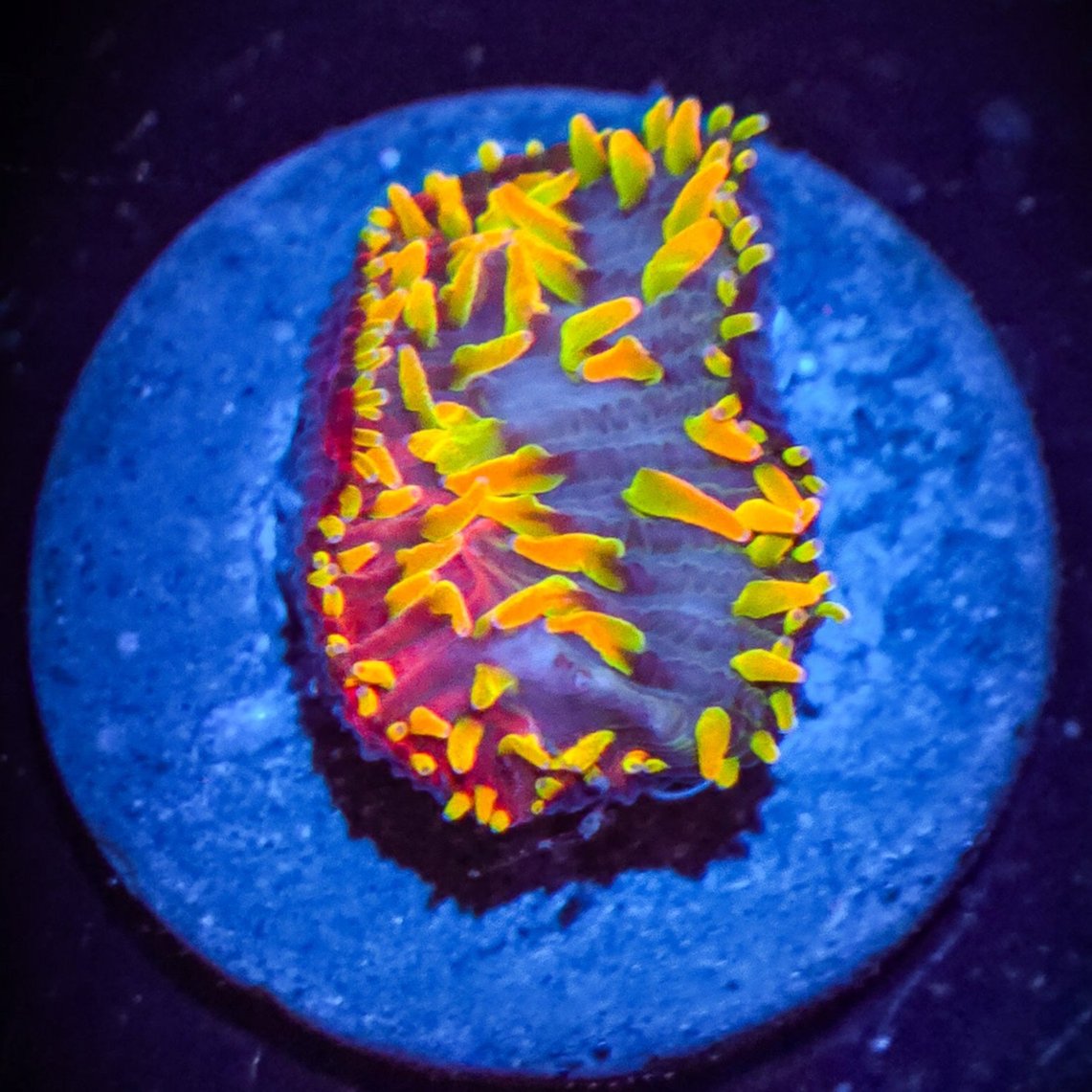
Description
Review
FAQ
Diaseris Plate Coral, also known as "Daisy Coral" or "Fungia Plate Coral," is a unique and fascinating addition to a reef aquarium. Its distinct appearance and relatively easy care requirements make it a desirable choice for hobbyists. It belongs to the family Fungiidae, which also includes other popular plate corals.
Diaseris corals are known for their free-living, solitary, disc-like shape. They feature a ridged or grooved skeletal structure, with a central mouth and radial slits that run outward. The coloration varies widely, from shades of brown and tan to vibrant greens, pinks, oranges, and purples, often with contrasting stripes or fluorescent highlights.
Diaseris Plate Corals prefer moderate to high lighting. They rely on photosynthesis through their symbiotic zooxanthellae algae, but excessive light can lead to bleaching. Place the coral on the sand bed or a flat substrate in the tank to avoid damage to its delicate skeletal structure. Avoid placing it on rockwork, as it can get dislodged and fall, leading to injury.
Flow: Moderate, indirect flow is best. This ensures that detritus does not settle on the coral's surface and helps bring nutrients to the polyps. Too much direct flow can cause the coral to retract and may prevent it from feeding properly.
Parameters: Temp 75°F to 82°F (24°C to 28°C), salinity 1.024 to 1.026 specific gravity, pH 8.1 to 8.4, alk 8 to 12 dKH, calcium 400 to 450 ppm, Mag 1250 to 1350 ppm
Feeding: While Diaseris Plate Corals are photosynthetic, they benefit greatly from supplemental feeding. Offer meaty foods such as chopped shrimp, mysis shrimp, brine shrimp, or reef-specific liquid foods. The coral will use its tentacles to grab and ingest food particles.
Description
Diaseris Plate Coral, also known as "Daisy Coral" or "Fungia Plate Coral," is a unique and fascinating addition to a reef aquarium. Its distinct appearance and relatively easy care requirements make it a desirable choice for hobbyists. It belongs to the family Fungiidae, which also includes other popular plate corals.
Diaseris corals are known for their free-living, solitary, disc-like shape. They feature a ridged or grooved skeletal structure, with a central mouth and radial slits that run outward. The coloration varies widely, from shades of brown and tan to vibrant greens, pinks, oranges, and purples, often with contrasting stripes or fluorescent highlights.
Diaseris Plate Corals prefer moderate to high lighting. They rely on photosynthesis through their symbiotic zooxanthellae algae, but excessive light can lead to bleaching. Place the coral on the sand bed or a flat substrate in the tank to avoid damage to its delicate skeletal structure. Avoid placing it on rockwork, as it can get dislodged and fall, leading to injury.
Flow: Moderate, indirect flow is best. This ensures that detritus does not settle on the coral's surface and helps bring nutrients to the polyps. Too much direct flow can cause the coral to retract and may prevent it from feeding properly.
Parameters: Temp 75°F to 82°F (24°C to 28°C), salinity 1.024 to 1.026 specific gravity, pH 8.1 to 8.4, alk 8 to 12 dKH, calcium 400 to 450 ppm, Mag 1250 to 1350 ppm
Feeding: While Diaseris Plate Corals are photosynthetic, they benefit greatly from supplemental feeding. Offer meaty foods such as chopped shrimp, mysis shrimp, brine shrimp, or reef-specific liquid foods. The coral will use its tentacles to grab and ingest food particles.
Review
FAQ

